SCI-skolans impact case
Här finns några av SCI-skolans impacts case inom utbildning och forskning samlade för att klargöra vilken påverkan dessa har på det omgivande samhället. Det står även angivet vilka av FN:s 17 globala mål för hållbar utveckling som angår respektive case.
Kontakta gärna impact@sci.kth.se ifall du vill lägga till ditt impact case på denna sida som uppdateras löpande.
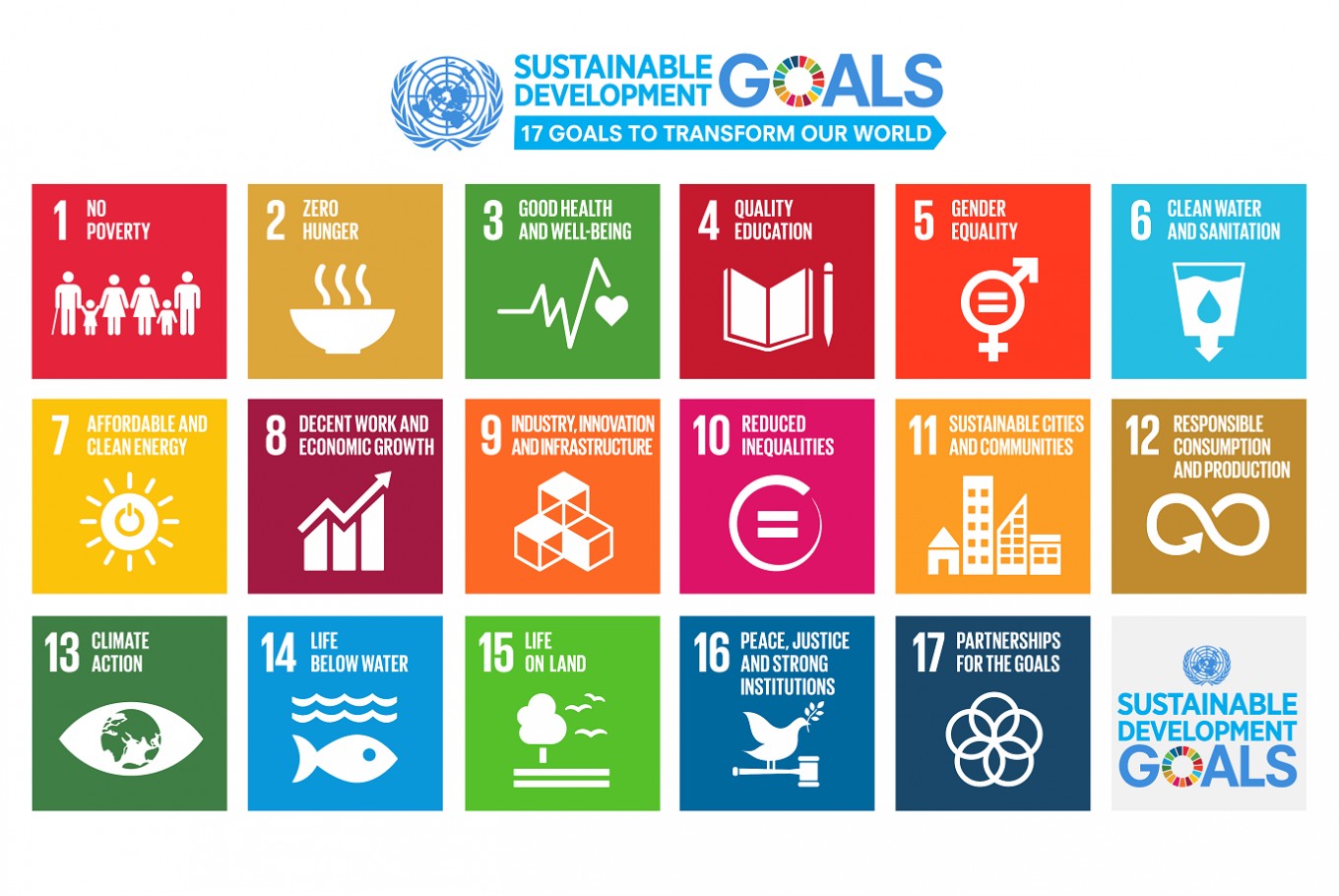
RESEARCH |
Digitized quality assurance of welded structures - towards industry 4.0
- Case study concerns impact of research
- Zuheir Barsoum, KTH Department of Aeronautical and Vehicle Engineering
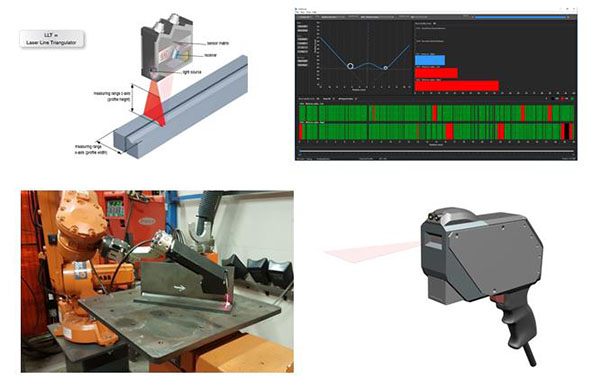
Summary of the impact
Many welded structures could be 20 – 40% lighter in vehicle applications if higher strength steel is used with an increased weld quality which will also result in a higher durability.
Winteria® has developed a sophisticated assessment procedure allowing for faster geometry readings with higher accuracy. The solution contains several numerical evaluation algorithms to allow for stable and objective geometry assessments. The measurement system contains of both hardware and software Winteria®
- Start-up company Winteria AB which have received large publicity and funding, including funding for start-ups by Vinnova Vinn Verifiering
- Commercial product; robust inline quality assurance for welded components in serial production
- The company is incubated by KTH Innovation and STING
- Major Swedish vehicle manufacturers as pilot clients today
Underpinned research
The research that led to this innovation was started in 2010 (Project LOST and WIQ) where a novel weld quality system was developed which had a link to the structural durability of welded components where the international quality standard does not have a link. This new quality system was introduced as corporate standard in several companies (Volvo CE, HAIB, among others). The next challenge was how to assure the quality levels, since the tools and gauges used were to rough and approximate. New research projects were started 2013 (LightStruct and OnWeld) to develop algorithms together with lasers to measure the quality levels digitally and automated in collaboration with Swerea KIMAB. The new concept showed promising result and quickly the involved companies in the projects wanted to have a commercial available system. In 2015, the researchers involved (Zuheir Barsoum, Thomas Stenberg, Eric Lindgren and Martin Engman) started the company Winteria AB to commercialize the product. This was supported by KTH Innovation, Vinnova (Vinn Verifiering), among others. Today several systems are installed at major vehicle manufacturer, e.g. Volvo CE, HIAB and research institutes such as Swerea KIMAB. The technology have received several prizes and large publicity.
Source to corroborate the impact
Users:
- Volvo Construction Equipment (Hasse Olsson)
- HIAB Cargotec (Svante Widehammar)
- Swerea KIMAB (Joakim Hedegård)
- SSAB (Mikael Reinberth)
External
- The Winner of University Challenge 2015: www.youtube.com/watch?v=GR8GUrG6dCk
- Commercial marketing video: www.youtube.com/watch?v=TqE6HwapZOY&t=1s
- www.winteria.com
Targeting UNs Sustainable Development Goals
9 Industry, innovation and infrastructure
12 Responsible consumption and production
13 Climate action
Through:
- Saving up to 30 % of material used
- Reduce component weight up to 40 %
- Increased weld quality of the products
- Improved structural durability
- Increased safety and prevention of failure
Waterborne Urban Mobility
- Karl Garme, Harsha Cheemakurthy, Meng Zhang, Magnus Burman, Zuheir Barsoum & Amelia Jenkins KTHSCI, Gunnar Flötteröd VTI, Susanna Hall Kihl Vattenbussen AB, Pernilla Ulfvengren & Mats Engwall KTH INDEK, Sören Ehlers & Franz von Bock und Polach TUHH, Johan Lantz Avatar Logistics.
- The project is funded by Trafikverket, Sjöfartsverket and Region Stockholm.
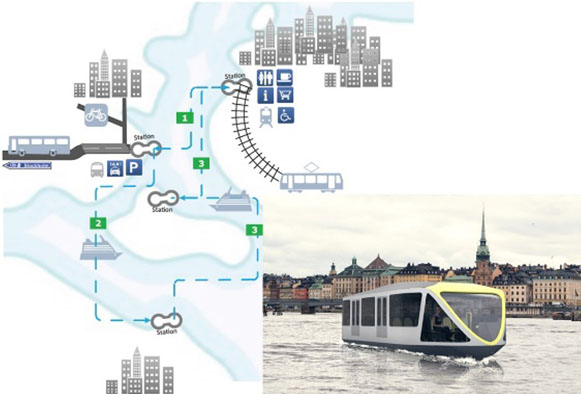
Summary of the impact
The project could be the eye-opener for sustainable communication and transport on urban and inland waters leading to a renaissance for waterborne public service. The results contribute to developing standardized ferries of modular lightweight design for year-around service and develops methods for improving tools for strategic public transport planning.
Main questions are:
- Which ship-type, shape and size is the most beneficial for public transport, considering functionality, manufacturing, operation, maintenance and recycling?
- Which materials and material concepts are best suited to meet this?
- How to assess and compare different multimodal public transport solutions?
The impact from the cluster of projects on inland waterways and urban mobility, directs towards off-the-shelf ferries accessible to public transport providers at fair cost and tools enabling urban planners to explore the opportunities of water for transport. Sustainable standardized vehicles and planner’s tools are anticipated to release the potential of waterways to add capacity and decreasing travel time by cross-connecting the public transport network, creating new travel patterns and links between areas so far isolated.
Underpinned research
Naval architects explore a modular design concept to easily tailor attractive passenger compartments based on standardized hull and superstructure modules for rational and cost efficient manufacturing, operation and maintenance.
Lightweight structure researchers focus on operational energy efficiency and efficient material use. Presently the contradiction between lightweight and ice conditions are high priority and a palette of combinations of material concepts and hull materials are investigated.
Researchers in transport science and economics develop an agent-based simulation model including the waterborne mode and investigates cost-driving factors and the origin of costs and benefits in the different modes of public transport.
Source to corroborate the impact
- Stockholms Läns Landsting, Stockholm County Council
- Trafikverket, Swedish Transport Administration
- Primary stakeholders of the project’s results are public transport providers, urban planners, public transport authorities and operators
- Ferry manufacturers (shipyards or automotive industry picking up the challenge)
Targeting UNs Sustainable Development Goals
15 Life on Land
11 Sustainable sities and communities
Clean air via innovative no-waste pollutant removal
- Marc Rovira, KTH, Department of Mechanics
- Christophe Duwig, KTH, Department of Mechanics
- Klas Engvall, KTH, Department of Chemical Engineering
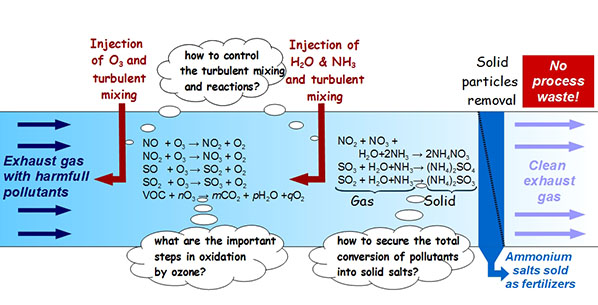
Summary of the impact
Due to the damaging influence of airborne pollutants on human life expectancy and the sustainability of the natural environment, strict regulations have been sanctioned in many businesses. While automotive regulations are very strict, other industries, such as maritime or food production have not faced very demanding regulations. This is changing and calls for new technical solutions.
Tackling improved pollution removal for these industries is ambitious and calls for innovative solutions that, ideally, produce no process waste. Hence, a novel solution which combines current Non-Thermal Plasma (NTP) and Electron Beam (EB) methods is proposed. Key to the success of this cutting-edge technology is the deep understanding of the chemistry and fluid mechanics involved in the process. The output of the project will be knowledge that will enable solutions for reducing the environmental impact of industrial plants.
Underpinned research
The foundational understanding which lead to the present research comes from several sources. Firstly, the increasing understanding of integration of new technologies into gas cleaning systems as well as expected significant reduction of the energy demands and environmental footprint of the marine and food industries. Secondly, developments in the design of efficient mixing solutions provide the physical framework for wider spread in other environmental applications.
The impact of the proposed solution is projected to occur in the near future as the viability of this technology is evidenced and more companies make use of it.
Final users and knowledge receivers
Clean air technology companies such as:
- 3nine AB
- Scandinavian Centriair AB
Targeting UNs Sustainable Development Goals
7 Clean and affordable energy
12 Responsible consumption and production
Optimization of radiation therapy
- Case study concerning impact of research
- Anders Forsgren, KTH Department of Mathematics
- Industrial PhD students joint with RaySearch Laboratories AB: Fredrik Löfman (PhD 2008), Rasmus Bokrantz (PhD 2013), Albin Fredriksson (PhD 2013), Michelle Böck (current PhD candidate) and Lovisa Engberg (current PhD candidate)
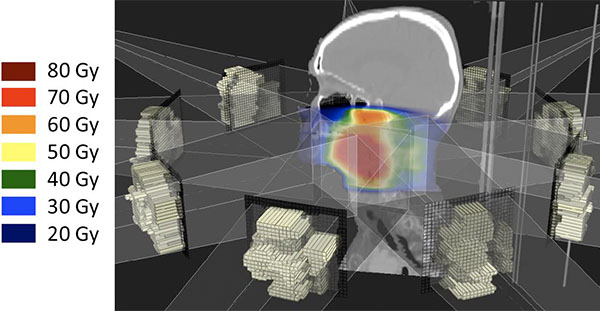
Summary of the impact
The research in question here was initiated in 2003, when a joint industrial PhD student project was initiated between KTH and RaySearch Laboratories AB. The main focus throughout the sequence of PhD student projects has been optimization problems that arise within radiation therapy. Mathematical optimization is an essential component in clinical radiation therapy treatment planning systems. Basically, the aim is to create a radiation treatment plan so that tumor cells are killed while healthy tissue is spared. Our research has concerned modelling as well as method development for the optimization problems. The research has had a direct impact into the treatment planning systems developed by RaySearch Laboratories AB. The research has concerned the treatment planning systems of the future, but in many cases the lead time from research prototypes to clinical use has not been very long.
Underpinned research
The research has been carried out in the form of industrial PhD student projects. The first one was initiated in 2003, and there has since been four more industrial PhD students at KTH within the project in two consecutive generations. As mentioned above, the main focus throughout the sequence of PhD student projects has been optimization problems that arise within radiation therapy. There is an inherent conflict in creating a radiation treatment plan so that tumor cells are killed while healthy tissue is spared. This gives rise to the optimization problems, and it makes the them complicated and challenging. We have aimed at formulating optimization problems that give solutions that are robust with respect to uncertainties in the model. In addition, we have increased our understanding of the characteristics of the optimization problems that arise. In particular, we have identified properties that we have managed to understand and take advantage of. The research has concerned modelling as well as method development for the optimization problems. Although the optimization problems come from a particular application area, the research has in many cases concerned mathematical fundamentals of optimization methods. RaySearch Laboratories has as of last year widened the scope and initiated two additional industrial PhD student projects at KTH Mathematics with different PhD student main supervisors.
Source to corroborate the impact
- Kjell Eriksson, CSO RaySearch Laboratories AB
- PhD theses by the industrial PhD students
- Scientific publications by the industrial PhD students
- Talk given when KTH Campus celebrated 100 years: www.youtube.com/watch?v=hZx2oFjLGTA
Targeting UNs Sustainable Development Goal
3 Good Health and well-being
Through: Improved quality of cancer treatment by radiation therapy.
Optical kidney Diagnostics
- Case study concerning impact of (clinical) research
- David Unnersjö-Jess, Hans Blom, Hjalmar Brismar (KTH), Lena Scott, Sonia Zambrano Sevilla, Jaakko Patrakka (Karolinska Institutet)
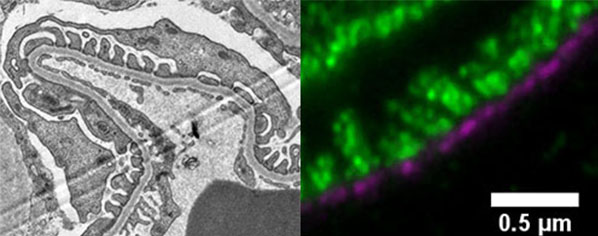
Summary of the impact
Kidney disorders has a very large health-cost in modern society. Patients often get sick at young age (even at birth) and suffer from a life-long condition of deterring kidney function (i.e. the possibility to filter/purify the blood). Until 2030 several hundred million humans will for example get diabetes, an illness that severly also deteriate kidney filtration over time, and in the end even kills it. Better kidney diagnostics methods, including improved gained knowledge to prevent and possibly also treat different filtration disorders is thus asked for, which is the aim in this work. Today kidney diagnostics of human biopsies are done using a combination of electron microscopy analysis (for the nanoscale) and light microscopy (for the macroscale). Morphological diagnostics of kidney pathology with electron microscopy (EM) and conventional light microscopy (LM) suffers a ‘mismatch’ in scales, and imaging of ultrathin and sliced tissue can potentially skew disease classification. We have instead develop an all optical diagnostic method by combining advanced 3D tissue-clearing preparation with high-resolution fluorescence biomedical imaging. Our biomedical diagnostic development will complement and even exceed the possibilities of today’s investigations, especially regarding amount of 3D sample volume visualized, and the possibility to investigate a plethora of essential (fluorescently labelled) functional kidney proteins.
Underpinned research
The research project started out as a KTH Master Thesis project in 2014 and has then continued as a PhD research project (to be defended durning durng the spring 2019). By exploring the strong entanglement between tissue-clearing and advanced optical imaging technologies, we have been able to initiate establishment of all optical kidney diagnostics (i.e. fluorescence microscopy from the millimeter to the nanometer scale of kidney tissue).
Targeting UNs Sustainable Development Goals
3 Good health and well-being
Through:
- Improved kidney pathophysiology diagnostics
- Full 3D visualization from nano- to macro-scales
- Multiprotein detection with fluorescence at all scales
Next generation cool electric machines
• Kristian Rönnberg, ABB Corporate Research & KTH Department of Mechanics
• Christophe Duwig, KTH Department of Mechanics
• Luca Peretti, KTH Department of Electric Power and Energy Systems
• Rebei Bel Fdhila, ABB Corporate Research
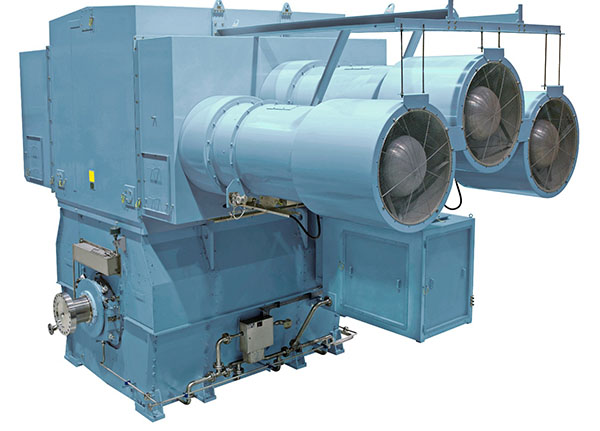
Summary of the impact
Electric motors constitute a significant part of the demand of electric energy globally, around 46% (Waide, Brunner:2011, p.33). Working towards improving energy efficiency of motors and generators is supporting UN sustainable development goals on energy, “Affordable and clean energy” and “Responsible consumption and production” (UN), and the European Commission’s Horizon 2020 focus area of “Secure, Clean and Efficient Energy” (EC).
Considering medium (0.75 – 375 kW) and large (375 – 100 000 kW) motors together (Waide, Brunner:2011, p.38), an increase of 1% point in mean efficiency would result in energy savings of around 73 TWh/year. This is close to 3 times the energy output from the Forsmark nuclear powerplant in 2017 (Vattenfall). Medium and large motors are for example found in pumps, fans, compressors, conveyors, mills and industrial applications.
One essential aspect in increasing motor efficiency is thermal management. For the development of thermal management solutions of high impact, accurate and applicable simulation methods are needed. Research applying heat transfer simulation methods will provide knowledge to motor and generator manufacturers for facilitating identification and implementation of efficiency-improving features, as for example new cooling techniques.
Underpinned research
The research project “Next generation cool electric machines” was started in late 2017. The project is a collaboration between KTH and ABB and is supported by the Swedish Foundation for Strategic Research (SSF). The project aims at identifying current limitations in electric machine cooling, identify innovative solutions concerning cooling, and evaluation and analysis of the identified solutions.
In the project, simulation methodology for resolving relevant phenomena are to be developed. The developed methodology will be applied in order to find solutions for thermal management of motors and generators.
The project is ongoing and is scheduled to be finalized in late 2022.
Source to corroborate the impact
1. P. Waide, C. U. Brunner, Energy-Efficiency Policy Opportunities for Electric Motor-Driven Systems, International Energy Agency, 2011
2. United Nations (UN), Sustainable Development Goals,
www.un.org/sustainabledevelopment/sustainable-development-goals/
(retrieved 2018-06-13)
3. European Commission (EC), Horizon 2020 – Secure, Clean and Efficient Energy,
ec.europa.eu/programmes/horizon2020/en/h2020-section/secure-clean-and-efficient-energy
(retrieved 2018-06-18)
4. Vattenfall, Produktionshistorik,
corporate.vattenfall.se/om-oss/var-verksamhet/var-elproduktion/forsmark/produktion-och-driftlage/produktionshistorik/
(retrieved 2018-06-13)
Targeting UNs Sustainable Development Goals
7 Affordable and clean energy
12 responsible consumtion and production
Through: Working towards improving energy efficiency of motors and generators is supporting UN sustainable development goals.
Curl simulation toolbox
- Case study concerns the impact of research
- Artem Kulachenko, KTH Department of Solid Mechanics
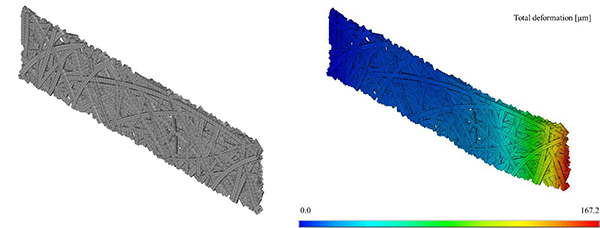
Summary of the impact
Océ is a world-leading company specializing in high-speed inkjet printing, which is a modern way of delivering flexible printing solutions, fully digitalized and customizable in every print. Paper is exposed to water-based inks during such a printing process. Due to the absorption of the ink, fibers composing paper swell, causing the global deformation of the paper sheet. Higher ink loads are attractive because they provide more vibrant colors, but at the tendency to raise unacceptable deformation of prints (buckling, wrinkling, curl) increases. The challenge of inkjet printing system designers is to maintain the printing quality and control the undesired deformations.
Purely experimental research has been very valuable to characterize the existing paper grades, their performance and to identify the problems. However, due to the complexity of the problem and many parameters involved, a number of factors related to the paper structure cannot be accurately controlled.
KTH has developed the computational module enabling the micromechanical simulation of the fiber network in response to water application. The tool is packaged and transferred to Océ. The tools are integrated into the commercial software used for pre- and post-processing, which facilitates the user-interaction.
The simulation tools enable a detailed study of:
- Effect of paper structure (fiber orientation, anisotropy, density, two-sidedness).
- Effect of water penetration dynamics.
- Effect of fiber morphology and mechanical properties of individual fiber properties.
It can also provide insights and inputs to the mesoscale constitutive models.
Underpinned research
The research was initiated by a consortium of four industrial partners, namely, Mondi, Oce, Kelheim, and SIG at Graz. The overall goal of the collaboration is to provide insights to factors controlling the dimensional stability of paper in digital printing applications. The computational software has been gradually developed earlier at KTH in other projects financed by VR and Vinnova.
Source to corroborate the impact:
Users:
- Louis Saes
- Ern Clevers
External:
- CD Laboratory for Fiber Swelling and Paper Performance
www.tugraz.at/institute/ipz/research/cd-laboratory-for-fiber-swelling-and-paper-performance/
Targeting UNs Sustainable Development Goals
9 Industry, innovation and infrastructure
12 Responsible consumption and production
13 Climate action
Through:
- Reducing paper waster by up to 80 %.
- Reduced ink consumption by up to 5 %.
- Reduced power usage by up to 5%.
- Improved reliability and a reduced number of unplanned production stops.
Structural batteries
- Case study concerns impact of research
- Dan Zenkert, KTH Department of Aeronautical and Vehicle Engineering
- Göran Lindbergh, KTH Department of Chemical Engineering
- Mats Johansson, KTH Department of Fibre- and Polymer Technology
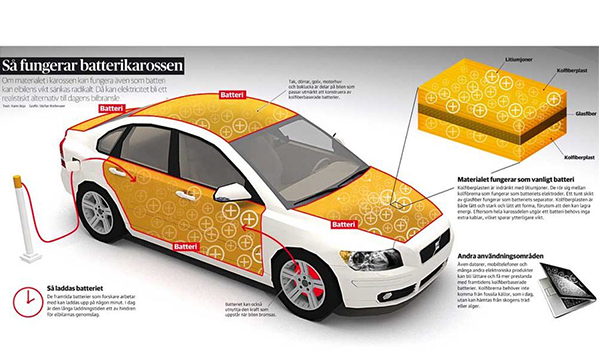
Summary of the impact
Reducing system mass for improvements in system performance has become a priority for a wide range of future applications that include load-bearing components in a system which requires electrical energy such as laptops, mobile phones and electric vehicles. Structure and energy storage are usually subsystems with the highest mass contributions but energy storage devices are structurally parasitic. A novel solution is a multifunctional lightweight design combining these two functions in a single material entity able to simultaneously bear mechanical loads by acting as a carbon fibre composite component and store electrochemical energy by acting as a lithium-ion battery. Think a car roof that also stores electrical energy as a battery!
Underpinned research
The research has been conducted in an interdisciplinary team with researchers from Lightweight Structures, Applied Electrochemisty and Polymer Chemistry. It has also been driven in collaboration with researchers from Chalmers, Imperial College London and IMDEA Materials in Madrid. There has been many projects in sequence and in parallel funded by SSF, The Swedish Energy Agency, VR, FORMAS and via H2020 Clean Sky 2 (in collaboration with Airbus).
The research has included fundamental studies of carbon fibres as battery electrodes, the use of bio-based carbon fibres from lignin, novel polymer based electrolytes, coating techniques for creating carbon fibre based positive battery electrodes and even the use of Sodium instead of Lithium being a more environmentally friendly alternative for battery chemistries.
The research has received very large publicity. Some examples are:
sverigesradio.se/sida/avsnitt/1253707?programid=412
www.dn.se/ekonomi/svenska-forskare-gor-hela-bilen-till-batteri/
Source to corroborate the impact
Interested partners:
- Airbus (Peter Linde, Markus Siemetzki)
- Volvo Cars (Kaj Fredin)
- Chalmers University of Technology (Leif Asp)
- Imperial College London (Emile Greenhalgh)
External
Targeting UN’s Sustainable Development Goals
7 Affordable and clean energy
9 Industry, innovation and infrastructure
13 climate action
Through:
- Saving substantial mass on systems level by using multifunctional materials
- Possibility to distribute energy closer to where it is consumed
- Possibility to create novel battery architectures
Sustainable water cleaning using capacitive desalination- birth of a new technology
- Case study concerns impact of research
- Joydeep Dutta, Functional and Nano- Materials, KTH Department of Applied Physics

Summary of the impact
In the world today, roughly 1 in 10 people lack access to safe water. It is estimated that without any new technological improvements, people living in water stressed areas would touch about half the human population (47% of the global population) by 2030. Many of the Sustainable Development Goals (SDGs) are linked to water management but large-scale and capital intensive water infrastructures have largely failed over the decades to provide affordable services especially to low-income communities. To meet SDG6, using traditional large-scale technologies, the global WASH investments until 2030 has been estimated to be 200 BUS$ per year. The solution is a unique membrane-less Capacitive Deionization (CDI) system using three-electrode architecture to reduce system power consumption and improve operational flexibility.
- Start-up company Stockholm Water Technology AB which have received considerable media attention and funding, including funding for start-ups by KTH Innovation, EIT-Innoenergy and Vinnova
- Extensive field testing in Törsby underway to desalinate Baltic sea water
- The company is in the Highway programme of EIT-Innoenergy
- Swedish and international companies and governments waiting to pilot
Underpinned research
The research that led to this innovation was started 15 years back to seek a solution for cost-effective desalination of brackish water with membrane-less processes. Right at the onset, research was focused keeping in mind the production needs should the work lead to an eventual product that is feasible. The choice of modifying commercially available flexible substrates instead of fabricating ourselves was one such example of the results of manufacturability analysis. The challenge was thus to find solutions to design cost-effective and compact solutions through funding from the Governments of Thailand and Oman. All the developments were done in-house which led to three patents filed, one US, one Swedish and another with WIPO. Though plans for the company amongst the associated researchers (Joydeep Dutta and Karthik Laxman) started in 2014, Stockholm Water Technology AB was registered in 2018, but all the ground work was well established. The technology is just about ready to be expanded to other areas of applications such as Providing agricultural water (SGRF, Govt. of Oman), cleaning mine water (MISTRA project), tannery waste (Rahman Group), treatment of food processing water (Barlingbo Bryggeri).
Source to corroborate the impact
Potential users:
- Värmdö commune (Sanna Mäkinen)
- Government of Oman (Dr. Ammar Obeidani)
- KTH Water Center (David Nilsson)
External
- Tidningen Skärgården, 17 January 2019
- www.stockholmwater.com
Targeting UNs Sustainable Development Goals
6 Clean water and sanitation
9 Industry, innovation, infrastructure
11 Sustainable cities and communities
12 Responsible consumption, production
13 climate action
15 Life on land
Water is essential across many domains…. SDG’s will be reached through:
- Affordable Desalination Technology
- Up to 40 % reduction in energy consumption
- Low maintenance products
- Simple, scalable technology
- Desalination, deionization and waste water treatments
- Remote application using solar cells
EDUCATION |
Proportionality in the Swedish electoral system
- Case study concerning of impact of education, popular presentation and debating in media.
- Svante Linusson (Department of Math)
Summary of the impact
The Swedish constitution (grundlagen) has been changed to improve the electoral system on elections for the national, regional and city level. My contribution is the focus of the new law is to ensure proportionality between the political parties. The new electoral system will be used for the first time in the election 9 September 2018.
Importance: Improved performance of the electoral system increases trust in democracy.
Underpinned activity
- I have for a long time taken an interest in popularizing mathematics. In particular, explaining the Swedish electoral system and its pros and cons from a mathematical viewpoint. On the election day 21 September 2010 I was interviewed in Dagens Nyheter and warned that the outcome might not be proportional as intended. This exact problem then happened.
- The day after the national elections 22 September 2010, I wrote an opinion article in the newspaper Svenska Dagbladet, pointing out the slightly unproportional outcome of the election due to how the mathematics of the law was formulated and how this was very close to affecting the majority situation in the national parliament. This became the most read opinion article that year in Svenska Dagbladet and gave rise to a large media attention.
- I was later an adviser to the parliamentary committee revising the constitution.
Source to corroborate the impact
- Interview in Dagens Nyheter:
www.dn.se/nyheter/vetenskap/ren-matte-ger-battre-demokrati/ - Opinion piece in Svenska Dagbladet:
www.svd.se/professor-oren-matematik-kostar-alliansen-tva-mandat - The national inquiry:
SOU 2012:94 Proportionalitet i val samt förhandsanmälan av partier och kandidater - The change in law proposed by the government is: Regeringsens proposition 2014/14:48
Targeting UNs Sustainable Development Goals
16 Peace, justice and strong institutions
Through: Improved performance of the electoral system increases trust in democracy.
Knut Lundmark (KL) Days
- Case study concerning of education
- Dennis Alp, KTH Department of Physics, Particle and Astroparticle Physics
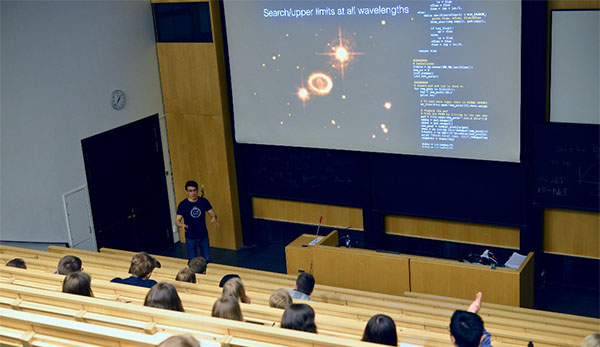
Summary of the impact
The KL Days is an annual two-day conference for high school students interested in astrophysics and space technology. The program consists of lecture, lab session, mingles, and a conference dinner. The goal is to provide an overview of astronomy, space sciences, and career opportunities associated with a astronomy and space, and thereby gain an increased understanding of the importance and possibilities of physics. The conference also allows the participants to meet other students that share the interest, as well as passionate researchers. The long-term aim is to increase the interest for astronomy and inspire more students to pursue careers in science and engineering. It is a national project and all high schools are invited to participate with two students.
My involvement in the project was to give a talk on my research and the life of a PhD student. I try to focus on the difference between science and research because I think this is important for interested students at their stage in education.
Underpinned research
I mainly talked about my work on supernovae, the death of massive stars that undergo titanic explosions. By studying the remnants of the explosions, we can learn about the extreme physics in the extreme environments in the core of massive starts, where the temperatures, densities, pressures, and gravitational fields dwarf anything we can create in labs on Earth. My research has focused on the dense core of the star after the explosion, which is believed to be a neutron star, and the absorption for x-rays by the material expelled by the explosion.
Source to corroborate the impact
- www.astronomiskungdom.se/knut-lundmark-dagarna/
- Mikael Ingemyr, Founder, The Swedish Astronomical Youth Association
Targeting UNs Sustainable Development Goals
4 Quality Education
Through: Inspire the next generation to go into STEM
Lise Meitner (LM) Days
- Case study concerning of education
- Dennis Alp, KTH Department of Physics, Particle and Astroparticle Physics
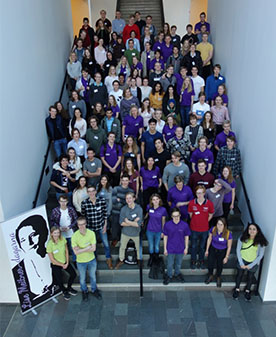
Summary of the impact
The LM Days is an annual two-day conference for high school students interested in physics. The program consists of lecture, lab session, mingles, and a conference dinner. The goal is to let the students meet cutting-edge and interesting physics, and thereby gain an increased understanding of the importance and possibilities of physics. The conference also allows the participants to meet other students that share the interest, as well as passionate researchers. The long-term aim is to increase the interest for physics and inspire more students to pursue careers in STEM. It is a national project and all high schools are invited to participate with two students.
Underpinned education
Several fellow PhD students and I were invited to the conference dinner to allow the participating students a chance to interact with us in an informal setting. The aim is to gain insight into academia and PhD programs in particular. This means that the focus was on more general experiences. We talked a lot about what to consider when choosing subject, skills that are important, and things we wished someone told us when we were younger. My personal research was of course also discussed, but it was not the focus.
Source to corroborate the impact
- www.lisemeitnerdagarna.se/
- Lara Sheik (Director, LM Days 2018)
Targeting UNs Sustainable Development Goals
4 Quality Education
Through: Inspire the next generation to go into STEM.
Rays – for excellence, high school summer research program
- Case study concerning of education
- Dennis Alp, KTH Department of Physics, Particle and Astroparticle Physics
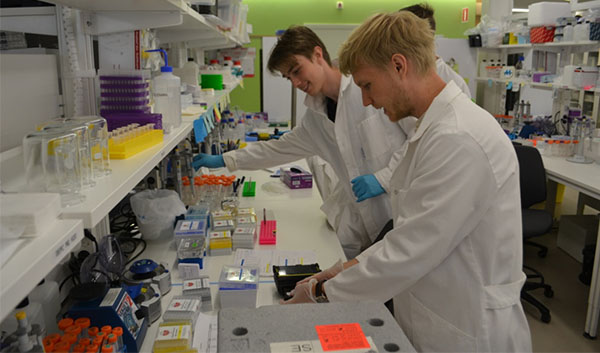
Summary of the impact
Rays is a four-week summer research academy for ~20 students in the second year in high school that has a great interest in the natural sciences, technology and mathematics. The aim of Rays is to inspire young students into becoming future scientists. I have previously helped organize the summer school, and I know many of the organizers and alumni. To many of us, the experience and contacts provided by Rays have proved very valuable to our professional careers.
I (and other mentors at KTH, KI, and SU) have contributed to this project by supervising high school students for two weeks each summer. We plan projects, introduce the students to the subjects, help them achieve the goals, and give comments on their final reports. This is often the first time the students are exposed to academia, research, and all the scientific tools, such as LaTeX, programming, and communication by articles.
Underpinned education
I try to make the summer projects as a small independent project that is related to my research. In 2016, the projects focused on spectral analyses of X-rays from galaxies with active central supermassive black holes. The X-ray spectra we analyzed carry information about the processes in the most extreme regions closest to the black holes. The 2017 projects were on the light we observe from a host star when an exoplanet transits. The atmospheres of exoplanets distort the light that passes it. To correctly interpret the observed data, we need to understand how the atmospheres affect the light.
Source to corroborate the impact
- Swedish: raysforexcellence.se/start
- English: raysforexcellence.se/eng
- Rays (Hampus Gummesson Svensson, )
- One of my students’ report here
- All student reports raysforexcellence.se/the-projects
Targeting UNs Sustainable Development Goals
4 Quality Education
Through: Inspire the next generation to go into STEM
Space Research School
- Case study concerning of education
- Dennis Alp, KTH Department of Physics, Particle and Astroparticle Physics
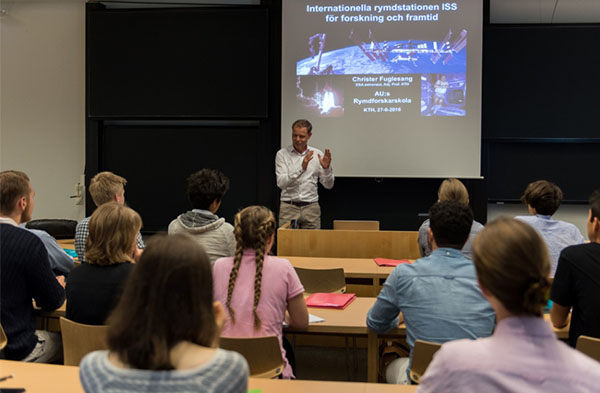
Summary of the impact
The Space Research School is a 10-day program that is organized annually in Stockholm, Gothenburg, and Kiruna and all 1st and 2nd year high school students in Sweden are free to apply. The program consists of popular science talks, lectures in astrophysics and space technology, lab exercises, study visits, and social activities. The long-term aim is to increase the interest for astronomy and inspire more students to pursue careers in science and engineering, meet like-minded students, and visit industry related to space technology in Sweden.
My involvement in the project was to give a talk on my research and the life of a PhD student. I try to focus on the difference between science and research because I think this is important for interested students at their stage in education.
Underpinned research
I mainly talked about my work on supernovae, the death of massive stars that undergo titanic explosions. By studying the remnants of the explosions, we can learn about the extreme physics in the extreme environments in the core of massive starts, where the temperatures, densities, pressures, and gravitational fields dwarf anything we can create in labs on Earth. My research has focused on the dense core of the star after the explosion, which is believed to be a neutron star, and the absorption for x-rays by the material expelled by the explosion.
Source to corroborate the impact
- www.astronomiskungdom.se/rymdforskarskolan/
- Mikael Ingemyr, Founder, The Swedish Astronomical Youth Association
Targeting UNs Sustainable Development Goals
4 Quality Education
Through: Inspire the next generation to go into STEM
Engineering for a Sustainable Society
- PhD student course - SG3133
- Christophe Duwig, KTH Department of Mechanics

Summary of the impact
Engineering for a sustainable society is a 3HP course dedicated to PhD student. The course is organized in 4 full days. The overall goal of the course is to Give a sustainable and multidisciplinary perspective to PhD students and inspire by linking science and societal challenges. The students learn to identify relevant data, link to relevant sustainable goal and societal challenges, be aware of tools to analyses and quantify the challenges, be aware of methodologies for reviewing technological gaps, and to relate innovation needs with research.
The course is an opportunity to meet other PhD students working across KTH and nordic universities and also hear from different perspectives (invited speakers from industry, authorities, …). The course output (selected presentations of students, concept and educational value, feedback evaluation, …) is presented at different workshops, e.g. organised by KTH Sustanability office.
Underpinned education
The course consists of a set of presentation and lectures – some done by KTH teachers, invited speakers or students themselves. Student presentations will complement the course and will consist of 3 presentations for each group of 4 or 5 students. These presentations have different objective and will focus successively from methodologies and topics within sustainability (A), a societal challenge (B) to technical solutions and research challenges (C). For presentation A the students will study and present key material and tools that will be used in the coming presentations. The second presentation focuses on a chosen societal challenge (B) and consists in finding and presenting data to define the challenge and set ground for addressing the challenge. For presentation C, the students will identify technologies (or technical bottlenecks) and research questions that are used/left to solve B. The preparation of presentation A, B and C is supervised by coaches.
Source to corroborate the impact
Users:
- The course was given HT17 and HT18 and the feedback from the students is very positive, both the format, topic and goals are well received and feel necessary.
- The course attracts students from all schools across KTH.
- Students who took the course HT17 volunteered to act as coaches for HT18.
External
- The course concept was presented in a plenary session at the International Sustainable Campus Network Annual Conference (Stockholm, June 2018)
- The course attracted Nordic students, as of HT18 5 students from Aalto University and 1 from Aarhus university.
- The course includes a number of external speakers from SEB Bank, Climeon, Scania, Tillväxtverket,.. and they seem to be happy to come back. Most of the speakers are not engineers and give a different perspective.
Targeting UNs Sustainable Development Goals
Although the choice of the topic is free, each group finds a different topic and offers a unique analysis. In fact, we’ve touched upon all UNs’s SDGs in only 2 years of existence.
